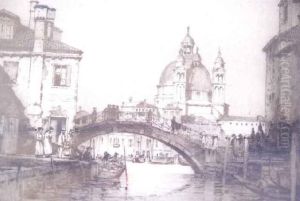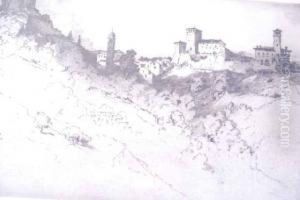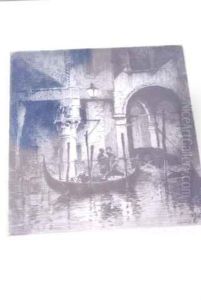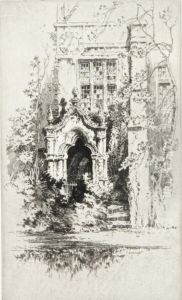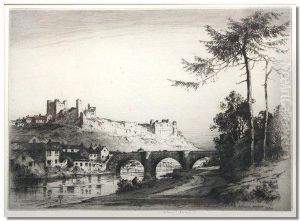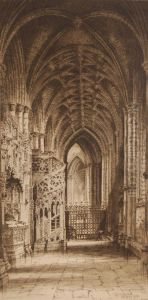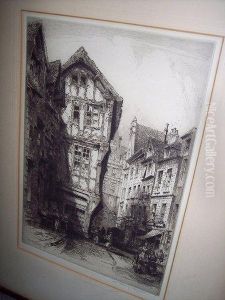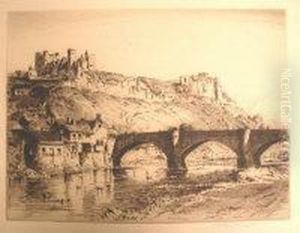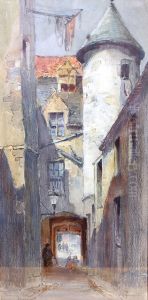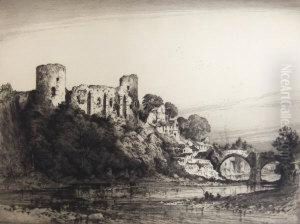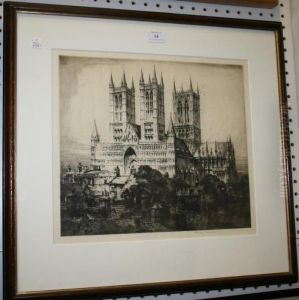Albany E. Howarth Paintings
Albany E. Howarth, born in Durham, England, in 1872, was an artist whose work significantly contributed to the early 20th-century British etching revival. Howarth began his artistic journey as an architect, a discipline that profoundly influenced his later work as an etcher. His transition from architecture to etching was not just a change in medium but also a shift in his creative expression, allowing him to capture and depict landscapes and architectural subjects with intricate detail and atmospheric depth.
Howarth's etchings are celebrated for their meticulous attention to detail, composition, and the ability to convey the texture and atmosphere of the subjects he portrayed. He focused primarily on landscapes, cityscapes, and architectural works, showcasing not only British scenes but also vistas from his travels in Europe. His works are characterized by a combination of technical precision and a romantic sensibility, bridging the gap between realism and the picturesque.
During his lifetime, Albany E. Howarth became a well-regarded figure in the world of fine art etching. He was a member of the Royal Society of Painter-Etchers and Engravers, an acknowledgment of his significant contributions to the art of etching. His works were widely exhibited and collected, both in Britain and internationally, reflecting his status as a leading etcher of his time.
Despite his success, Howarth remained dedicated to his craft, continually refining his techniques and exploring new subjects. His legacy is preserved in the collections of major museums and galleries, where his etchings continue to be admired for their beauty and technical excellence.
Albany E. Howarth passed away in 1936, leaving behind a body of work that continues to influence and inspire artists and collectors alike. His meticulous etchings serve as a testament to his skill, vision, and the enduring appeal of the etched medium. Howarth's contributions to the British etching revival have cemented his place in the history of art as an artist who beautifully merged the disciplines of architecture and fine art.
